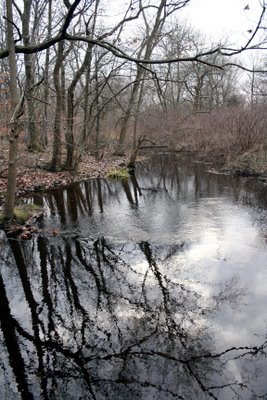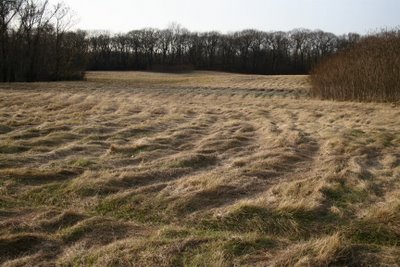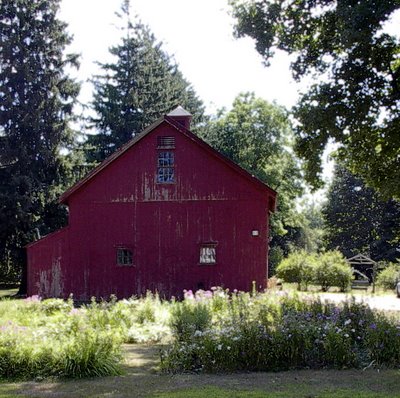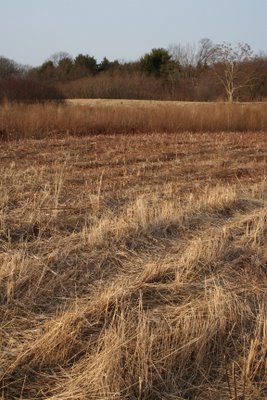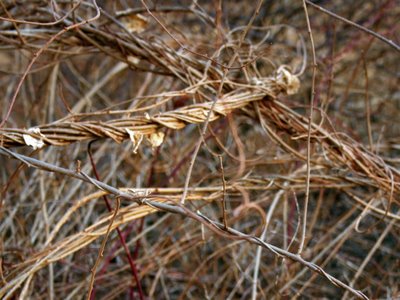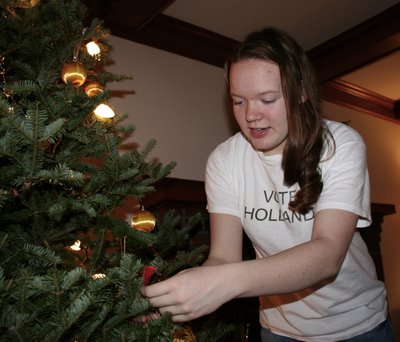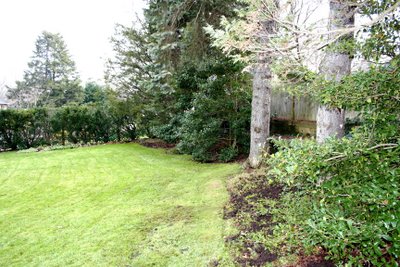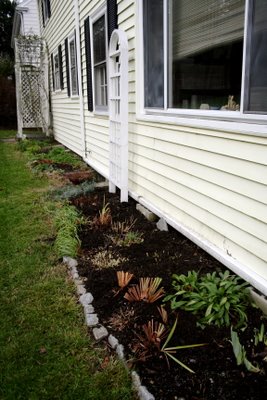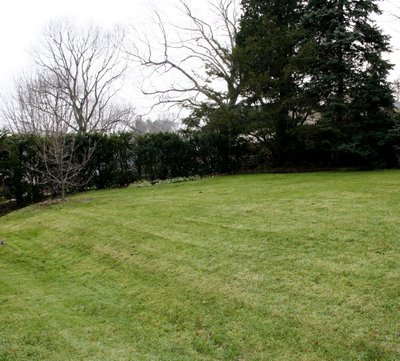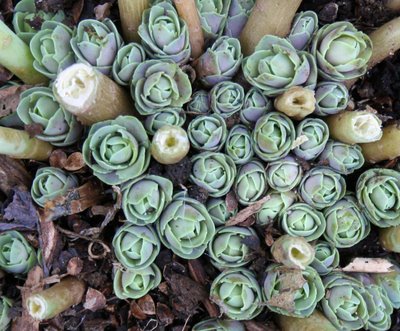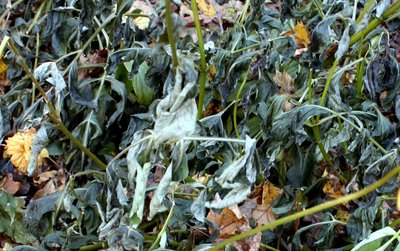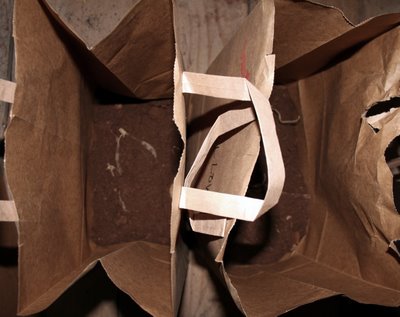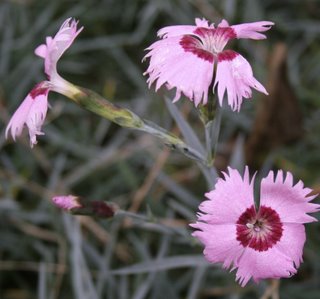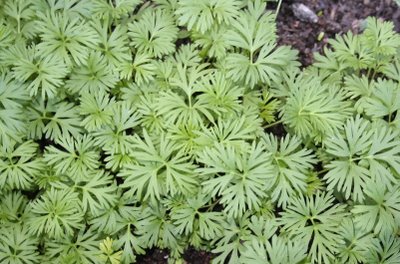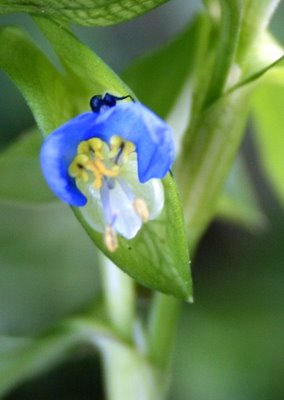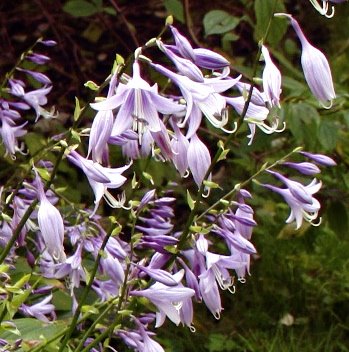His grandfather from Aschbach, Alsace, was listed as a farmer on the manifest of the ship that brought him to New York in 1868 and again on the 1880 marriage license that united him with a Prussian farmer's daughter in Edwardsville, Illinois.
The narrow wedge backyard of the home that they built is now overrun with ground ivy. Who knows what it looked like a hundred years ago?
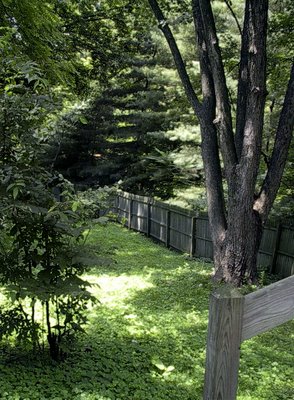
On another branch of my father's family tree, here's what my great-great aunt Annie had to say about how she and her sister, my great grandmother, Lillie, handled lawn care in 1880's Edwardsville:
Most of the home place was in bluegrass, especially the front yard where it grew high at times. Then it was mowed with a scythe. No lawn mowers then. On one occasion after it had been mowed, a number of spears of grass were left standing here and there. This was very disorderly according to my notion, and I resolved to remedy it. Securing a hatchet and Lillie’s aid, I began. The hatchet was dull, and the spears of grass were tough, so we took turns about, one using the hatchet and the other holding the spears of grass taut. When it was Lillie’s turn to wield the hatchet her force was better than her aim; consequently she nearly severed my big toe. We were both barefooted. The blood flowed freely, and we both ran into the house, Lillie doing most of the screaming as she thought she had mortally wounded me. The only thing else that I remember of this incident is that I sat with my foot in a wash-bowl of water all of the afternoon and that I chafed at the confinement and at the interruption of my interesting task.
Perhaps the two gardeners are just visible in the upstairs windows of the home place in this 1880's tintype.

Twenty years later, in 1907, their nephew, Billie, was pushing a reel mower around that Edwardsville lawn.
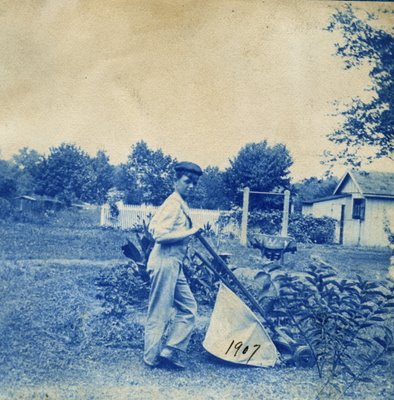
And in 1913, my one-year old father was wading in a midwestern sea of grass.
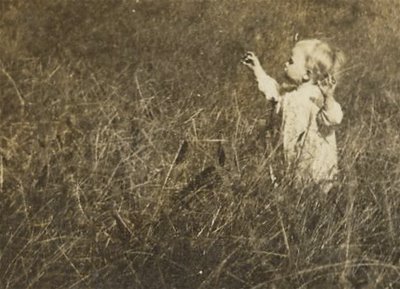
While the children were tackling the lawn, the adults busied themselves with flowery pursuits. Sometimes, it was difficult to untangle the two, as my great great aunt, Annie, wrote:
Papa once had a special flower bed and he threatened to whip the next child who trod on it. The next day, when Mamma left the print of her foot in it, he didn’t know what to do. At dinner he said, “Mamma, after all my trouble, Alfred has stepped on my flower bed.” Mamma had to own up, since Alfred, our [hired] . . . man wore about number 13 shoes.
Here is my great grandmother, Lillie, inspecting her floral namesake with her dainty-footed mother, Piety (on the right).
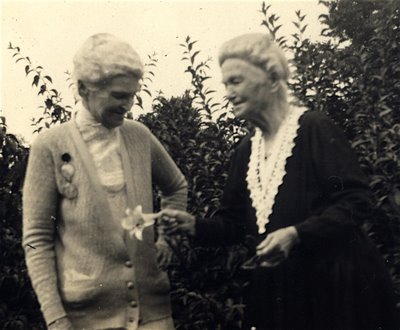
Strange to think of these off-hand comments about gardens that no longer exist from people long dead.


